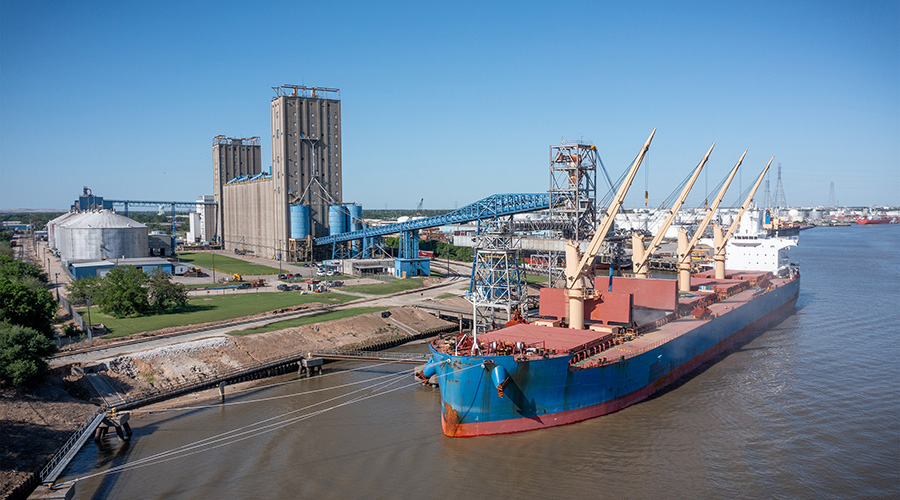Virginia Inland Port now 100% powered by solar
2/28/2023
By Grace Renderman, Associate Editor
Environmental sustainability is top of mind at the Virginia Port Authority. A recent manifestation of that priority: Virginia Inland Port in Front Royal now obtains all its electricity via solar power.
VIP is an intermodal container transfer facility occupying 161 acres nearly 60 miles west of Washington, D.C. The terminal delivers goods to the inland markets of D.C. and Baltimore via Hampton Roads. VIP rail service runs on 17,820 feet of track adjacent to Norfolk Southern Railway’s 11-state Crescent Corridor.
Until last month, and like other facilities the port authority operates, VIP was running on grid electricity — the type of electricity used by homes, derived from a variety of renewable and non-renewable energy sources.
“It’s a good start for us because VIP is a smaller operation,” says port authority spokesman Joe Harris. “It was a rather easy conversion to do simply because it doesn’t require as much [electricity].”
The cost to use solar-only power at VIP adds up to 15 cents per kilowatt hour, or about $10,000 a year, he adds. The solar power is also locally sourced.
“It costs us a little bit more on a month-to-month basis, but we see that as the cost of doing business, and also as part of the cost of moving toward our larger 2040 goal,” Harris says.
Counting down to 2040
What is the 2040 goal? The port authority plans to become carbon-neutral by the end of that year, and part of that path involves fulfilling all the Port of Virginia’s marine terminals’ electricity needs through clean energy resources. VIP uses 670 kilowatts of energy per year, half a percent of the estimated 130,000 megawatts needed to power the port’s largest marine terminals — Norfolk International Terminals and Virginia International Gateway.
The port will use whatever clean energy sources are available, whether it’s nuclear, hydroelectric, solar or something else, Harris says. The port has been taking incremental steps for the past few years to bring itself closer to the 2040 goal through installing hybrid-electric equipment.
Sustainability is also a big part of the port authority’s $1.4 billion capital campaign to invest in operational efficiency, Harris says. Higher operational efficiency leads to less electricity usage through fewer container moves, reducing transit time from point A to point B, he says.
Overall, the port authority aims to source 100% of its electricity from clean sources by 2032.
The commitment to become a net-zero emission port is important because consumers and ocean carriers are demanding for the U.S. supply chain to get greener, Harris says.
“Playing catch-up is very difficult, so the goal is to get ahead of it,” he says. “It’s a very lofty goal, but we think it’s attainable.”

